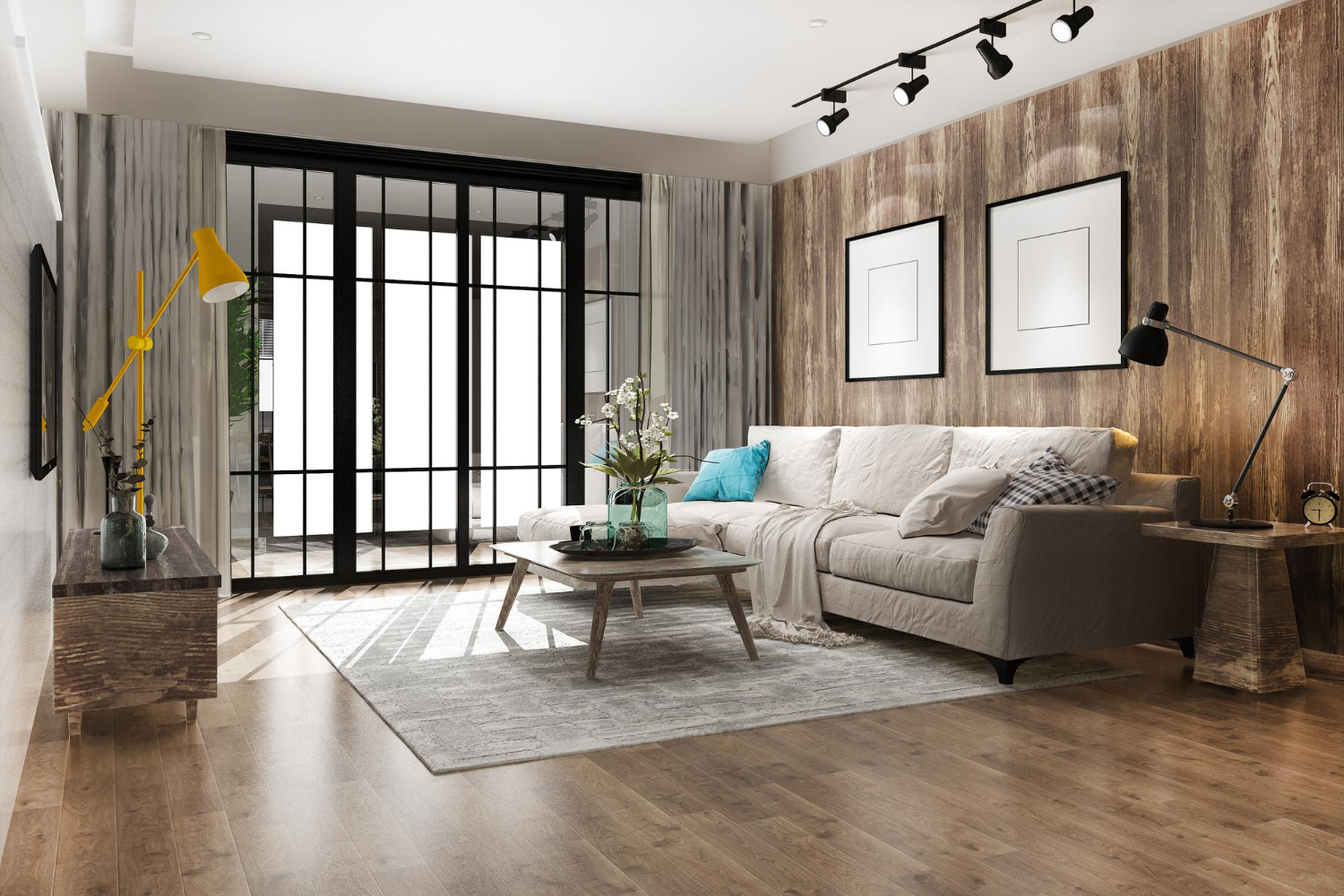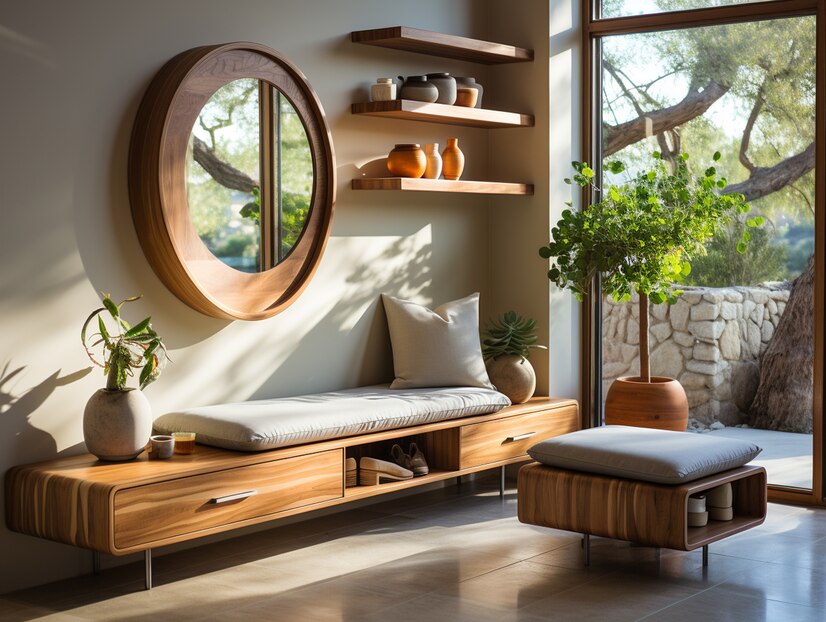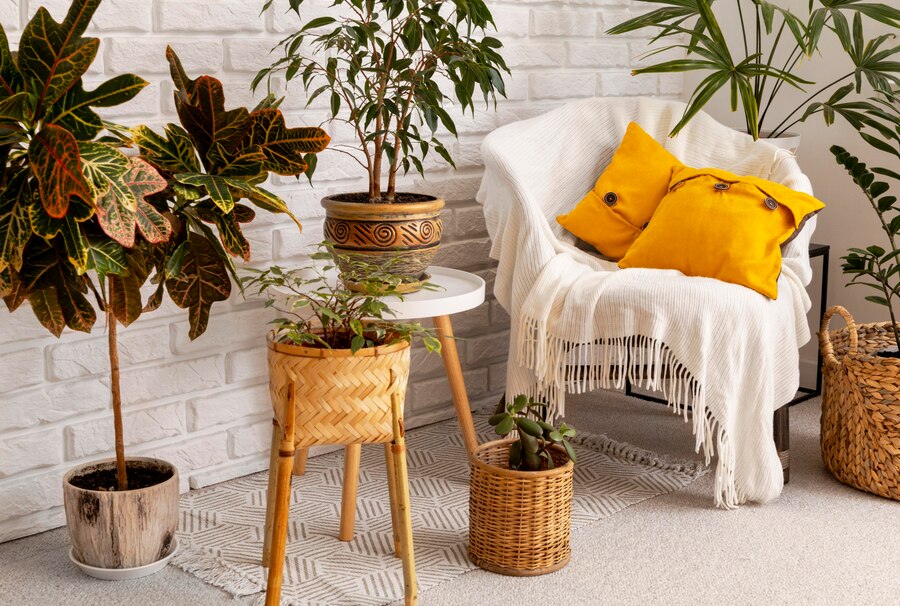
Best Natural Materials for a Healthier Living Space
Making a healthier living space is not just a trend; it’s a choice for well-being and sustainability. People are now more aware of how the environment affects their health. Because of this, the demand for eco-friendly decor, sustainable materials, and toxin-free furniture has grown. This blog will look at the best natural materials for a healthier home. It offers tips and advice to help you turn your space into a healthy and sustainable sanctuary.
The Importance of Natural Materials

Natural materials come from renewable resources and have little effect on the environment. They don’t release harmful chemicals like synthetic options do. This makes them a better choice for anyone wanting a healthier living space. Using natural materials in your home can greatly lower your exposure to toxins. These harmful substances are often present in regular furniture and decor.
Common Misconceptions
Many people think that eco-friendly decor and sustainable materials are costly and hard to care for. With the right knowledge and approach, making a sustainable living space can be affordable and practical. Many people think natural materials aren’t as appealing as synthetic ones, but that’s not true. Natural materials offer a timeless beauty that can enhance any interior design style.
Key Benefits / Why It Matters
Health Benefits
Natural materials help create a healthier indoor space. They lower exposure to volatile organic compounds (VOCs) and other harmful chemicals. Toxin-free furniture made from sustainable materials keeps your home safe. It helps prevent pollutants that can lead to respiratory issues, allergies, and other health problems.
Environmental Impact
Choosing eco-friendly decor and sustainable materials supports environmental conservation efforts. Using renewable and biodegradable materials helps lower your carbon footprint. It also supports the preservation of natural resources. This not only benefits the planet but also promotes a sense of responsibility and mindfulness in your lifestyle choices.
Aesthetic Appeal
Natural materials offer a unique aesthetic that is both timeless and versatile. No matter if you like rustic, modern, or minimalist styles, adding natural elements can make your home look better. From the warmth of wood to the elegance of stone, natural materials add character and charm to any space.
Real-Life Applications
Many homeowners have successfully transformed their living spaces by incorporating natural materials. For instance, using reclaimed wood for flooring not only adds a rustic touch but also supports sustainable practices. Choosing linen or cotton for furniture upholstery can make a space feel warm and welcoming. It also helps keep the environment free from toxins.
Step-by-Step Guide / Actionable Insights

Step 1: Assess Your Space
Begin by evaluating your current living space and identifying areas where natural materials can be incorporated. Consider factors such as flooring, furniture, and decor items. This assessment will help you prioritise changes and decide on the materials you select.
Flooring
- Wood: Opt for sustainably sourced wood such as bamboo or reclaimed timber. These options are durable, aesthetically pleasing, and environmentally friendly.
- Cork: A renewable resource, cork flooring is not only eco-friendly but also provides excellent insulation and sound absorption.
- Natural Stone: Stone flooring, such as slate or limestone, offers a timeless look and is highly durable.
Furniture
- Toxin-Free Furniture: Look for furniture made from solid wood, metal, or glass, as these materials are less likely to emit harmful chemicals.
- Upholstery: Choose natural fabrics like cotton, linen, or wool for upholstery to ensure a comfortable and toxin-free experience.
Decor
- Plants: Incorporate indoor plants to improve air quality and add a touch of nature to your decor.
- Natural Fibres: Use rugs and curtains made from natural fibres such as jute or hemp to enhance the eco-friendly appeal of your space.
Step 2: Research and Source Materials
Research suppliers and manufacturers who focus on eco-friendly decor and sustainable materials. Check for certifications like the Forest Stewardship Council (FSC) or Global Organic Textile Standard (GOTS). These ensure the products you pick are authentic and sustainable.
Step 3: Implement Changes Gradually
Transforming your living space doesn’t have to happen overnight. Begin by making small changes and gradually incorporate more natural materials as your budget and time allow. This approach makes the transition more manageable and allows you to appreciate each change fully.
Additional Expert Tips & Common Mistakes to Avoid
Best Practices
- Prioritise Quality Over Quantity: Invest in high-quality natural materials that will last longer and provide better value over time.
- Embrace Minimalism: A minimalist approach not only reduces clutter but also highlights the beauty of natural materials.
- Mix and Match Textures: Use different textures and materials to make your space lively and welcoming.
Common Mistakes
- Ignoring Maintenance Requirements: Natural materials often require specific care and maintenance. Make sure you know these requirements. They help keep your materials looking good and lasting longer.
- Neglecting Indoor Air Quality: Natural materials can improve air quality, but you must also ensure good ventilation and airflow in your home.
Advanced Insights / Expert Recommendations
Industry Perspectives
Experts in interior design and sustainability support a complete way to build a healthier home. This means using natural materials. It also involves focusing on energy efficiency, reducing waste, and conserving water.
Lesser-Known Insights
- Biophilic Design: This approach links indoor spaces with nature. It boosts well-being and productivity.
- Cradle-to-Cradle Design: This idea focuses on the lifecycle of materials. It promotes using products that can be fully recycled or biodegraded.
Creating a Healthier Home with Natural Materials: A Step-by-Step Guide

Making a healthier home with natural materials helps both your health and the planet. Choose eco-friendly decor, use sustainable materials, and select toxin-free furniture. This way, you can turn your home into a sanctuary that promotes health, sustainability, and beauty. As you start this journey, focus on quality. Embrace minimalism and keep up with the latest trends in sustainable living.
Your home is a reflection of your values and lifestyle. Select your materials carefully. This will help you create a space that looks great and supports your health and sustainability goals.
Begin your journey to a healthier home today. Start by checking your space and spotting areas that need improvement. Look into sustainable choices and decide wisely for your benefit and the planet’s.

